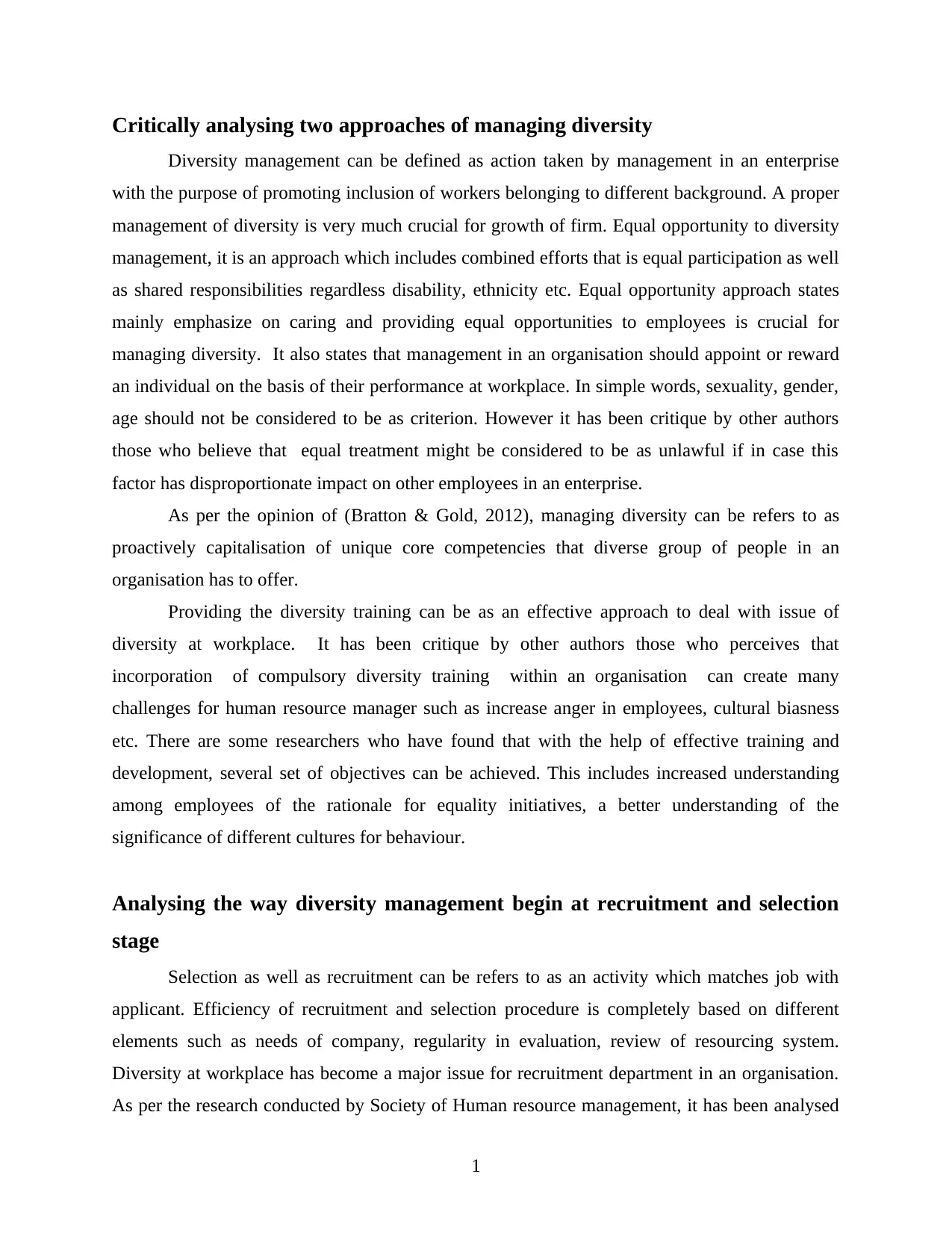Report: Critically Analyzing Diversity Management in HRM
VerifiedAdded on 2022/08/21
|5
|764
|14
Report
AI Summary
This report critically analyzes two primary approaches to managing diversity within organizations. It begins by defining diversity management and emphasizing its crucial role in organizational growth, particularly focusing on the equal opportunity approach, which advocates for equal participation and shared responsibilities regardless of factors like disability or ethnicity, and discusses its limitations and criticisms. The report then delves into how diversity management is initiated at the recruitment and selection stage, highlighting strategies employed by human resource departments to attract a diverse workforce. It references research on recruitment practices and the importance of eliminating bias during interviews and assessments. The report also acknowledges the role of diversity training and the need to address potential challenges such as cultural biases. The analysis is supported by references to academic literature, including works by Bratton & Gold, and Armstrong et al.
1 out of 5











![[object Object]](/_next/static/media/star-bottom.7253800d.svg)